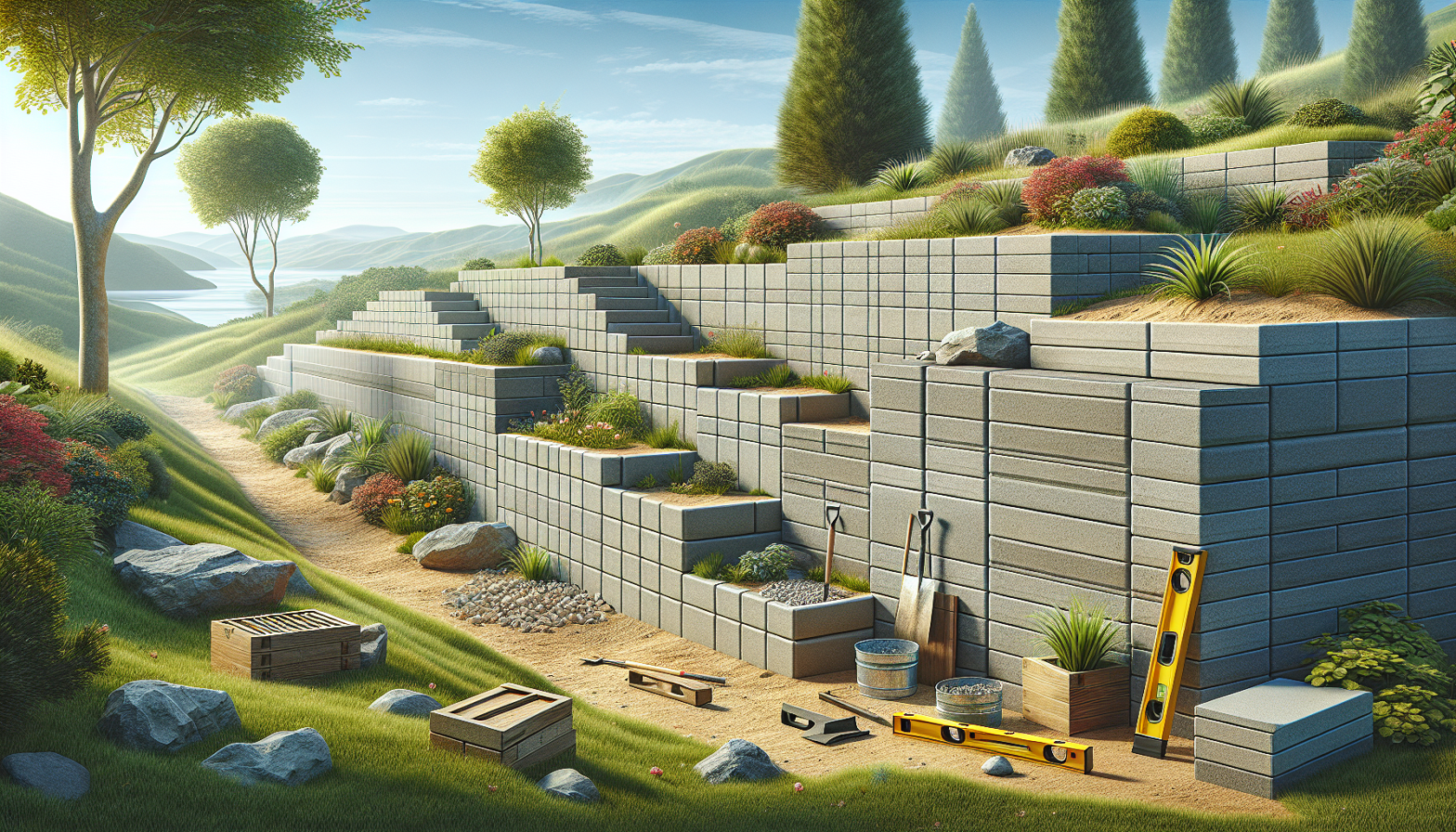Constructing Retaining Walls with Concrete Blocks
Constructing retaining walls with concrete blocks can provide both structural integrity and aesthetic appeal to your landscape projects. This method is popular for its durability and ease of installation. Additionally, it offers flexibility in design and can be adapted to various terrains.
Retaining walls are essential for preventing soil erosion, managing water runoff, and creating usable flat spaces on sloped terrain. Using concrete blocks for constructing these walls is a reliable and practical solution that has been embraced by professionals and DIY enthusiasts alike. This article explores the key considerations and steps involved in building retaining walls with concrete blocks.
Understanding the Benefits of Concrete Blocks
Concrete blocks offer numerous benefits when it comes to constructing retaining walls. These blocks are known for their strength and durability, ensuring that your wall will endure for years. Additionally, they are relatively easy to handle and install compared to other materials such as natural stone or poured concrete. Betonblock is a popular choice among builders due to its reliability and ease of use. Another advantage is the aesthetic flexibility, as concrete blocks come in various shapes, sizes, and textures, allowing you to create a wall that complements your landscape design.
Selecting the Right Tools and Materials
Choosing the appropriate tools and materials is crucial for the successful construction of a retaining wall. You will need high-quality concrete blocks, gravel or crushed stone for drainage, geotextile fabric to prevent soil movement, and sand for leveling. Using concrete wall molds can also help in creating custom block shapes that fit specific design requirements. It is important to have a level, string line, tamper, shovel, and other basic construction tools on hand to ensure precision during the building process.
Step-by-Step Guide to Building Your Wall
The first step in constructing a retaining wall with concrete blocks is planning and marking the area where the wall will be built. Once you have marked the location, excavate the base trench to the required depth, ensuring it is wide enough to accommodate the blocks. Next, lay a base layer of gravel or crushed stone and compact it using a tamper to create a solid foundation. Place the first row of blocks on this base layer, ensuring each block is level and properly aligned.
As you build upward, stagger the joints between rows for added stability. Use geotextile fabric behind the wall to prevent soil from seeping through the gaps between blocks. Backfill with gravel as you go up to enhance drainage and reduce pressure on the wall. Finally, cap the top row of blocks with special capstones for a finished look.
Maintenance Tips for Longevity
After constructing your retaining wall, regular maintenance is essential to ensure its longevity. Inspect the wall periodically for any signs of damage or movement. Address minor issues promptly to prevent them from becoming major problems. Ensure that drainage systems are functioning correctly to avoid water accumulation behind the wall, which can cause pressure build-up and potential failure.
Additionally, remove any vegetation growing close to or on the wall as roots can weaken its structure over time. By following these maintenance tips, you can keep your retaining wall in excellent condition for many years.

































